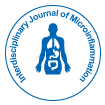A Guide to Empowering Breast Cancer Survivors
Received: 05-Feb-2024 / Manuscript No. ijm-24-128569 / Editor assigned: 07-Feb-2024 / PreQC No. ijm-24-128569 (PQ) / Reviewed: 19-Feb-2024 / QC No. ijm-24-128569 / Revised: 22-Feb-2024 / Manuscript No. ijm-24-128569 / Published Date: 29-Feb-2024 DOI: 10.4172/2381-8727.1000262
Introduction
Breast cancer remains one of the most prevalent cancers affecting women worldwide, with millions of new cases diagnosed each year. However, significant strides have been made in understanding its biology, improving early detection methods, and developing more effective treatment strategies. This article provides a comprehensive overview of recent advances in breast cancer treatment, ranging from novel targeted therapies to innovative surgical techniques [1].
Early detection remains crucial for improving breast cancer outcomes. Advances in imaging technologies, such as digital mammography, magnetic resonance imaging (MRI), and ultrasound, have enhanced our ability to detect breast cancer at its earliest stages. Moreover, the emergence of molecular profiling techniques, including genomic assays and liquid biopsies, enables more precise characterization of tumors, guiding treatment decisions and predicting prognosis.
Description
Early detection and diagnosis
Targeted therapies: Targeted therapies have revolutionized the management of breast cancer, offering personalized treatment options based on the molecular characteristics of individual tumors. For example, the discovery of human epidermal growth factor receptor 2 (HER2)-positive breast cancer led to the development of HER2-targeted agents, such as trastuzumab and pertuzumab which have significantly improved outcomes for patients with this subtype. Similarly, inhibitors of cyclin-dependent kinases (CDKs), such as palbociclib and ribociclib, have shown efficacy in hormone receptor-positive breast cancer, delaying disease progression and improving survival [2].
Immunotherapy: Immunotherapy has emerged as a promising approach for breast cancer treatment, harnessing the body's immune system to target and eliminate cancer cells. Checkpoint inhibitors, such as pembrolizumab and atezolizumab have demonstrated activity in subsets of patients with triple-negative breast cancer, particularly those with high levels of programmed death-ligand 1 (PD-L1) expression. Ongoing research aims to identify biomarkers that predict response to immunotherapy and optimize its integration into standard treatment regimens [3].
Minimally invasive surgery: Advancements in surgical techniques have led to a shift towards less invasive approaches for breast cancer surgery, minimizing surgical trauma and improving cosmetic outcomes. Techniques such as breast-conserving surgery (lumpectomy) and oncoplastic surgery allow for the removal of tumors while preserving the natural appearance of the breast. Moreover, sentinel lymph node biopsy has become the standard of care for axillary staging, reducing the need for more extensive lymph node dissections [4].
Adjuvant and neoadjuvant therapy: Adjuvant therapy, including chemotherapy, hormonal therapy, and radiation therapy, plays a crucial role in reducing the risk of disease recurrence following surgery. Neoadjuvant therapy, administered before surgery, offers the additional benefit of down staging tumors, making them more amenable to surgical resection. Tailoring treatment regimens based on tumor characteristics and patient-specific factors allows for personalized approaches to maximize efficacy while minimizing toxicity [5,6].
Conclusion
Significant progress has been made in the field of breast cancer treatment, driven by advances in early detection, molecular characterization, and therapeutic interventions. While challenges remain, including the development of resistance to targeted therapies and the optimization of immunotherapy strategies, ongoing research efforts hold promise for further improving outcomes and quality of life for patients with breast cancer. Collaborative efforts among researchers, clinicians, and patient advocates are essential to translating these advancements into meaningful clinical benefits and ultimately achieving the goal of eradicating breast cancer.
Acknowledgement
None
Conflict of Interest
None
References
- Giri M, Thapa RJ, Upreti B (2018) Breast Cancer in Nepal: Current status and future directions. Biomedical Reports 8: 325-29.
- Youlden DR, Cramb SM, Yip CH, Baade PD (2014) Incidence and mortality of female breast cancer in the Asia-Pacific region. Cancer Biol Med 11: 101-115.
- Amatya I, Vaidya A, Regmi PR (2021) Perceptions of Adolescents Regarding Breast Cancer. J Nepal Health Res Counc 19: 331-336.
- Shah SK (2020) Knowledge, Attitude and Practice Regarding Prevention and Screening of Breast Cancer among Reproductive Age Women. Archives Cancer Res 8: 1-2.
- KO CM, Sadler GR, Ryujin L, Dong A (2003) Filipina American women's breast cancer screening behaviors. BMC Public Health 3: 27.
- Haji-Mahmoodi M, Montazeri A, Jarvandi S, Ebrahimi M (2002) Breast self-examination: knowledge, attitudes, and practices among female health care workers in Tehran, Iran. Breast J 8: 222-225.
Indexed at, Google Scholar, Crossref
Indexed at, Google Scholar, Crossref
Indexed at, Google Scholar, Crossref
Indexed at, Google Scholar, Crossref
Citation: Liu X (2024) A Guide to Empowering Breast Cancer Survivors. Int JInflam Cancer Integr Ther, 11: 262. DOI: 10.4172/2381-8727.1000262
Copyright: © 2024 Liu X. This is an open-access article distributed under theterms of the Creative Commons Attribution License, which permits unrestricteduse, distribution, and reproduction in any medium, provided the original author andsource are credited.
Share This Article
Recommended Journals
Open Access Journals
Article Tools
Article Usage
- Total views: 562
- [From(publication date): 0-2024 - Apr 20, 2025]
- Breakdown by view type
- HTML page views: 375
- PDF downloads: 187
